4 Days 3 Nights
Daily Tour
50 people
___
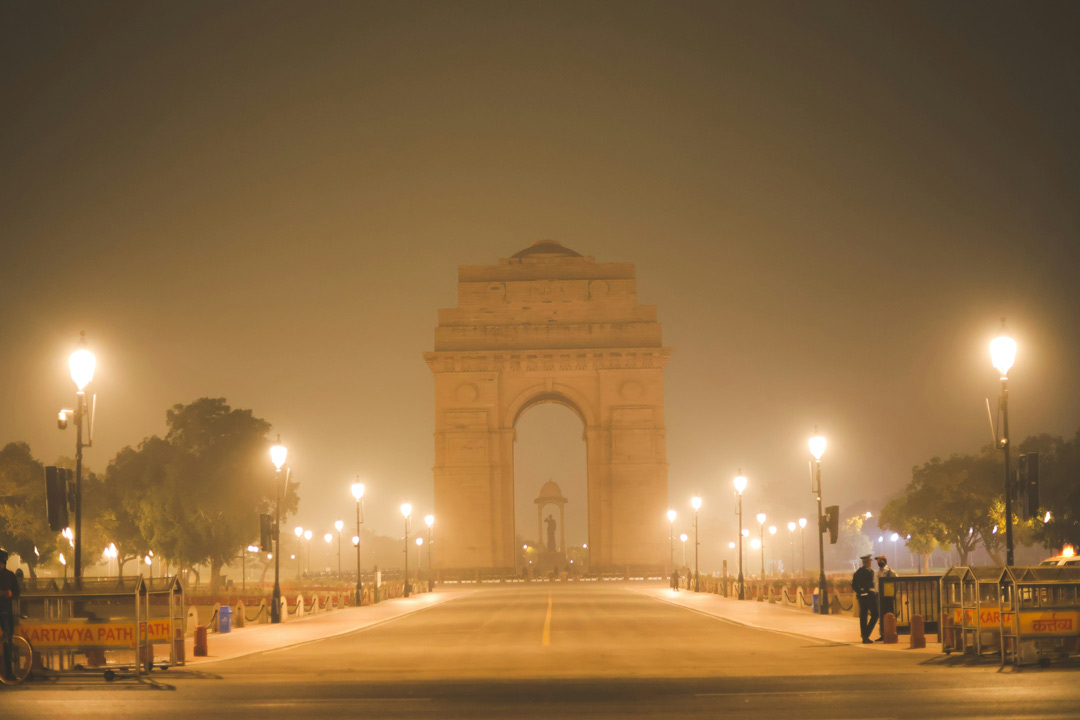
Dist: 529 km | Time: 12 to 16 hr | Altitude: 300 m to 2050 m
Embark on a comfortable journey from Delhi to Manali, covering 530 km in approximately 10 to 16 hours. You will arrive in Manali the next day and enjoy serene landscapes.
Meals: Nil
Night: Journey by Volvo Bus or Cab
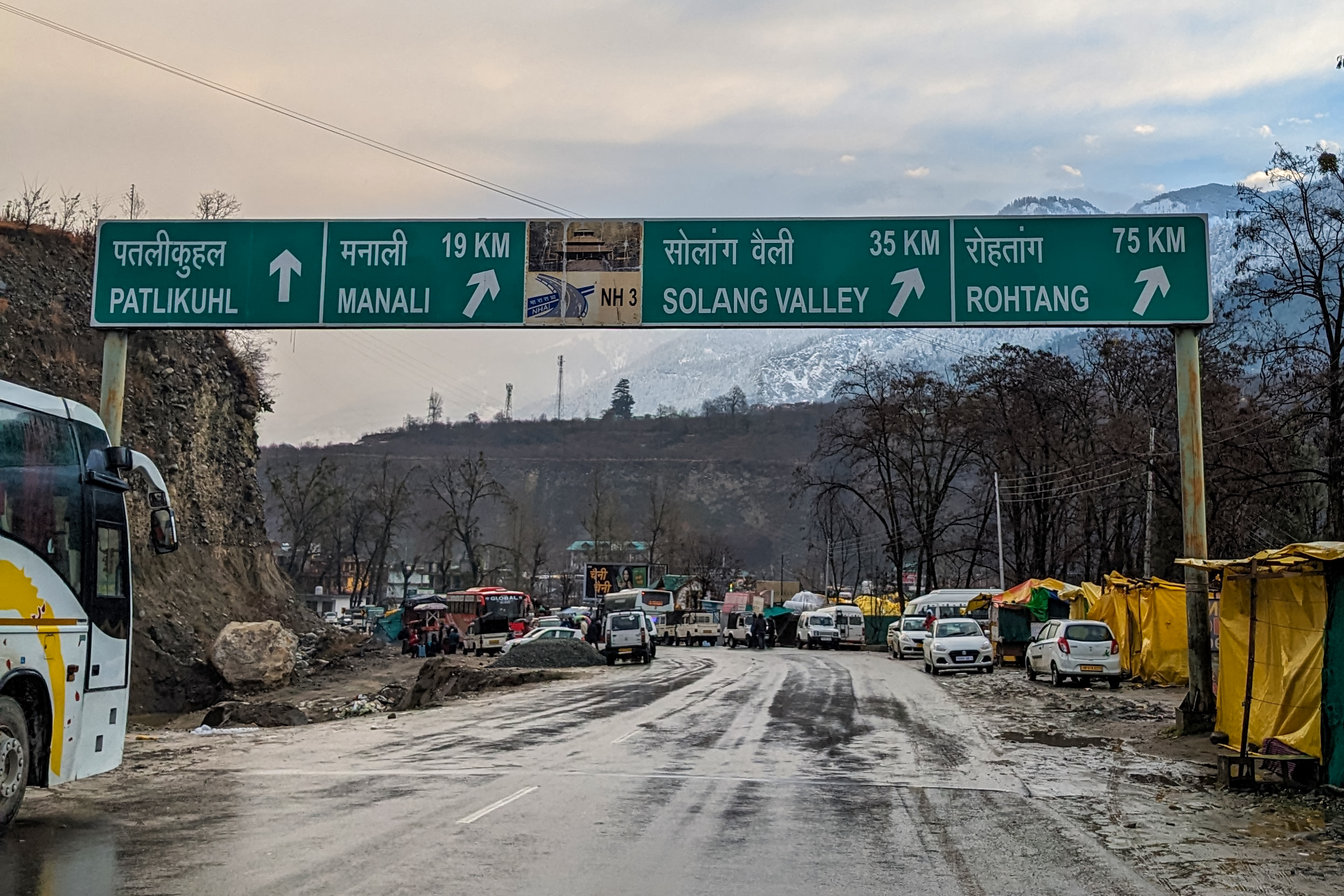
Check-In: 11:00 am | Sightseeing: 2:00 pm to 6:00 pm
Upon reaching Manali, check into your hotel in the morning. After freshening up and resting, explore Manali’s attractions, including Mall Road, Hadimba Temple, Van Vihar, Old Manali, and the Clubhouse. In the evening, you will return to the hotel.
Meals: Dinner
Night: Stay at the Hotel in Manali
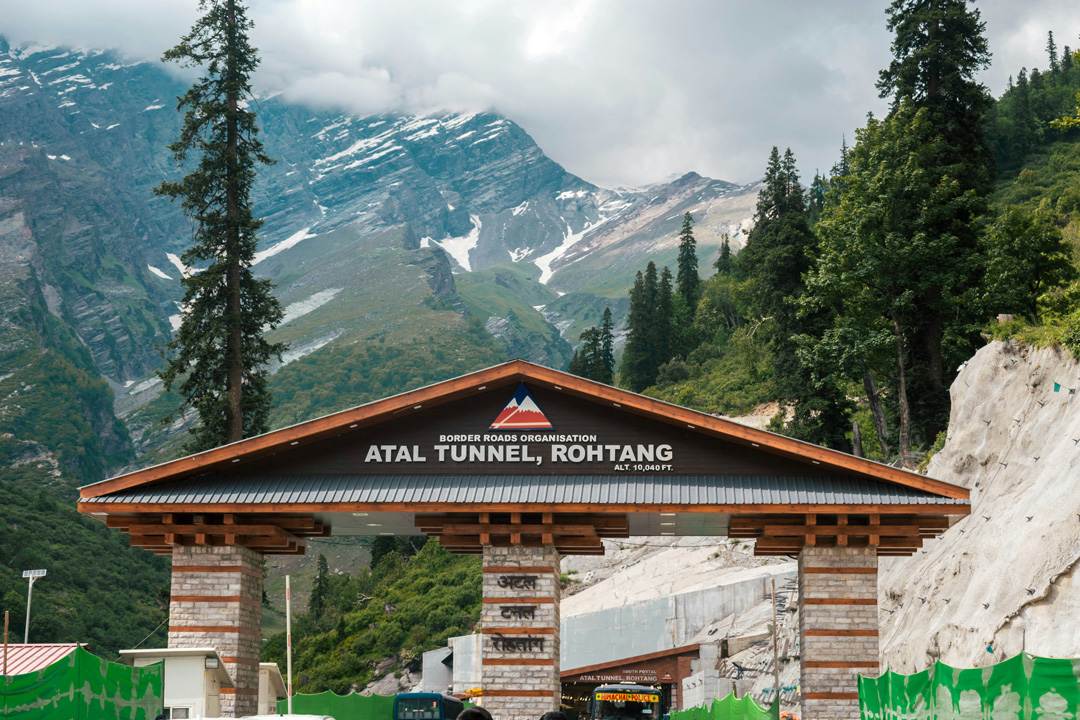
Sightseeing Time: 10:00 am to 6:00 pm
Post-breakfast, travel to Sissu in the Lahaul Valley, passing through Solang Valley and crossing the Atal Tunnel, the world's longest highway tunnel above 10,000 feet. You can book various adventure activities (excluded) in Solang Valley and Sissu. In the evening, you will return to your hotel in Manali.
Meals: Breakfast and Dinner
Night: Stay at the Hotel in Manali
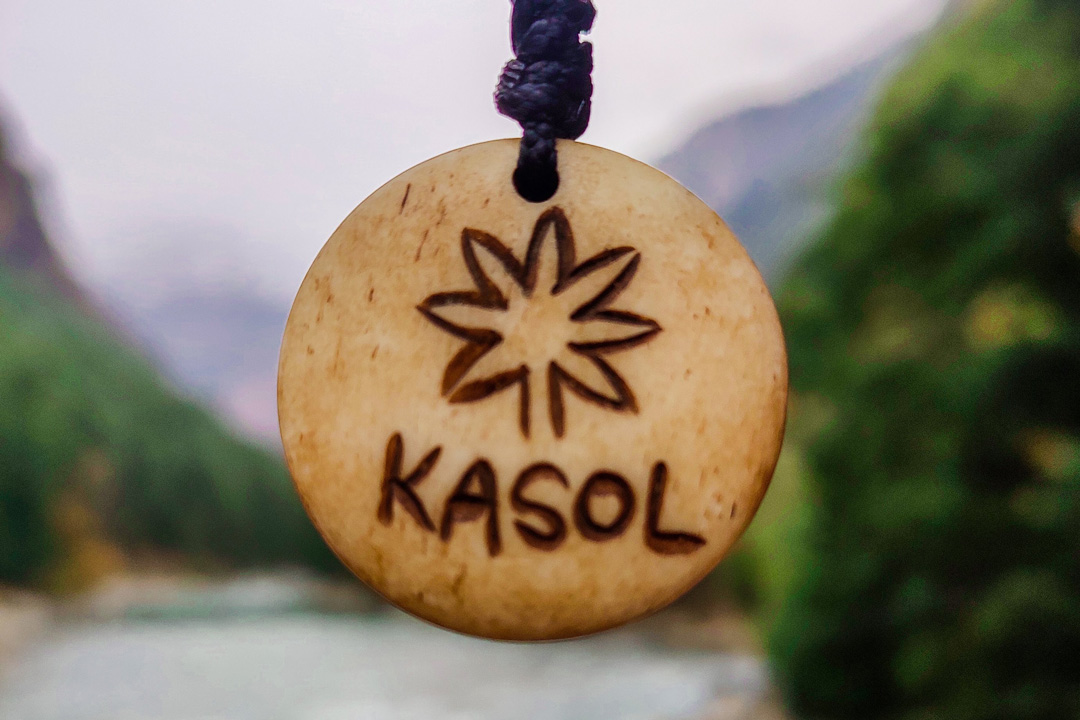
Dist: 81 km | Time: 2 to 4 hr | Altitude: 2050 m to 1580 m
Spend the morning enjoying Manali. Then, depart for Kasol via Kullu Valley, with options for paragliding or river rafting (additional cost). On arrival in Kasol, visit Manikaran Temple, known for its hot springs, before checking into your hotel for the night.
Meals: Breakfast, Dinner
Night: Stay at the Hotel in Kasol
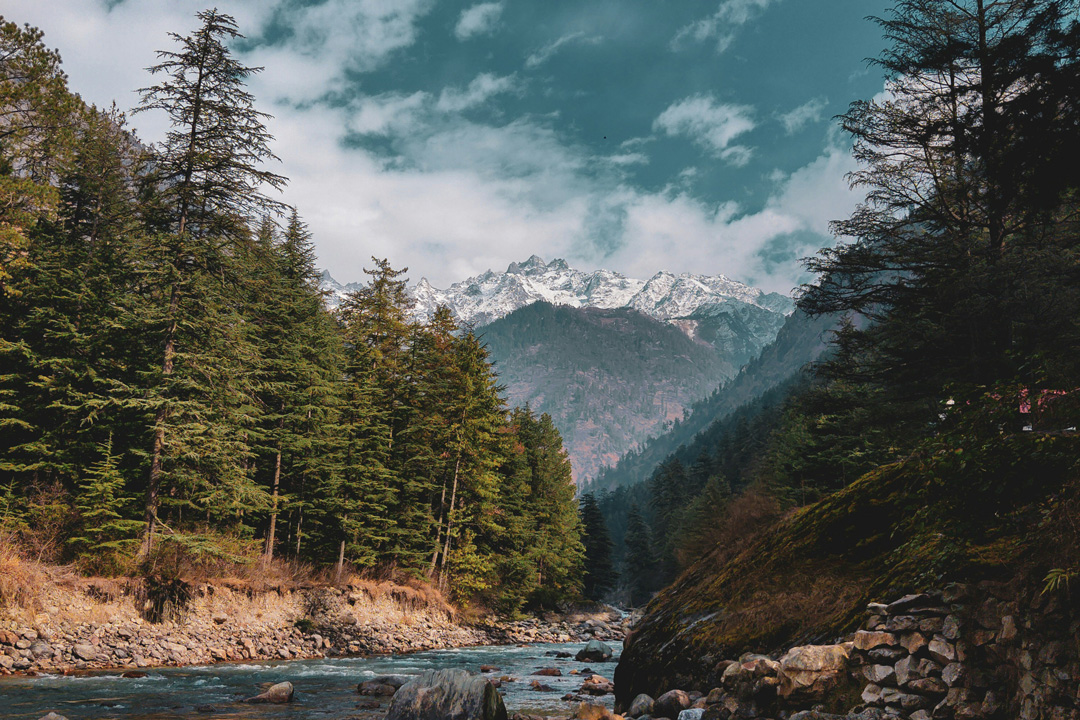
Checkout: 11:00 am | Depart: 3:00 to 7:00 pm
Wake up to stunning views of Parvati Valley. After breakfast and checking out, you can take a cab to Delhi in the afternoon, explore Kasol further on your own, and board a bus to Delhi later in the evening.
Meals: Breakfast
Night: Journey by Volvo Bus or Cab
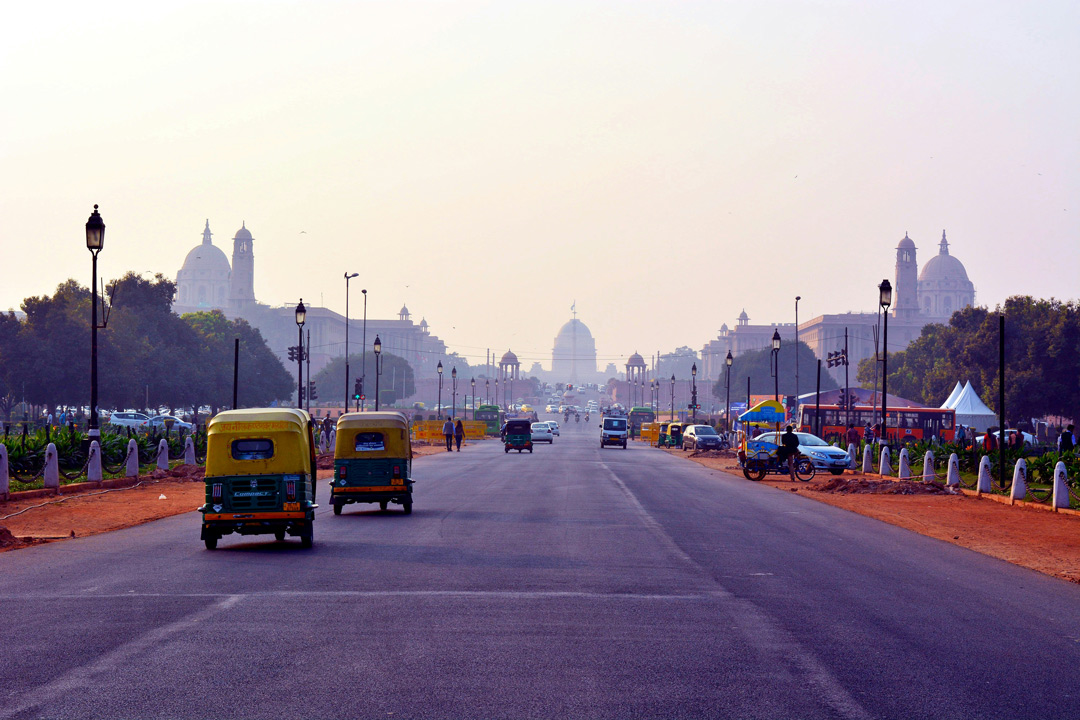
Dist: 489 km | Time: 10 to 14 hr | Altitude: 1580 m to 300 m
After an overnight journey, you’ll arrive in Delhi between 8:00 and 10:00 a.m. Enjoy a final glimpse of the city’s hustle and bustle as you go home or continue to your next destination. Reflect on the beautiful memories and experiences from your tour.
Meals: Nil
Night: Nil
| Location | Places to visit |
| Manali | Mall Road Manali, Old Manali Van Vihar, Club House, Solang Valley, Jogini Waterfall (small trek), Vashisth Temple |
| Kasol | Parvati River, Manikaran Temple and Gurudwara, Manikaran Hot Water springs. |
Notes:
Add on Local Sightseeing
Notes:
We understand that plans can change, but the booking amount is non-refundable due to the costs we incur in preparing for your tour or activity. If you wish to reschedule for a different date, we'll adjust it to the same package, providing you with the necessary flexibility. If you have paid the total amount but cancelled the package. You will be provided with a refund, as mentioned below:
Tours or activities may be cancelled due to unforeseen events beyond our control, weather conditions such as heavy rain or storms, or government restrictions like sudden closures of specific areas. In such a scenario, we will provide an alternate tour or activity. However, no refunds will be provided.
About Manali Sissu Kasol Tour Package
About Manali
Manali, nestled in the Kullu Valley of Himachal Pradesh at 6,398 ft, is a mesmerising hill station of international fame, known for its enchanting landscapes, snow-capped mountains, and serene valleys. This picturesque destination, synonymous with streams, birdsong, and lush forests, has captivated travellers for centuries with its blend of natural beauty, adventure opportunities, and spiritual significance. Historically, Manali marks the starting point of an ancient trade route crossing the Rohtang and Baralacha passes, connecting regions like Lahaul, Ladakh, and even Kashmir. At the same time, modern roads link it to Leh, Pangi Valley, and Spiti. The legend of Manu, who is said to have first stepped on earth at this spot after the great deluge, adds a spiritual allure, with the Manu Temple still standing in the village. Whether you visit during the warmer months for hiking and exploring or in winter for its magical, snow-covered vistas, Manali offers a fairy-tale experience, attracting adventure lovers, nature enthusiasts, and honeymooners with its array of activities and breathtaking scenery. With its rich mix of natural, historical, and cultural attractions, Manali remains a favourite destination for travellers seeking an escape from everyday life, offering something unique for everyone across all seasons.
About Sissu
Sissu, also known as Khwaling, is a picturesque village in the Lahaul Valley of Himachal Pradesh, located on the banks of the Chandra River at an altitude of about 3,200 meters. This serene hamlet, just 6 km from the North end of the Atal Tunnel and 40 km from Manali, has emerged as a popular tourist destination, offering stunning landscapes of snow-capped mountains, glacial rivers, and lush greenery. Historically significant as part of an ancient trading route connecting India to Tibet, Sissu reflects a vibrant blend of Indo-Tibetan culture, visible in its traditional wooden houses, intricate carvings, and rich cultural heritage, including festivals like Losar, Halda, and Fagli. The village serves as a gateway to the Himalayan regions of Ladakh, Lahaul, and Spiti. It offers various outdoor activities like trekking, camping, rock climbing, fishing, and nature trails, making it ideal for adventure enthusiasts. Notable attractions include the Sissu Waterfall, Sissu Lake, and nearby monasteries like Gondhla and Labrang Gompa, which offer glimpses into the region’s deep-rooted Buddhist traditions. The panoramic views, the tranquil environment, and warm local culture make Sissu an offbeat destination that promises a blend of nature beauty, adventure, and cultural immersion, perfect for those seeking a peaceful yet enriching escape in the Himalayas.
About Kullu
The Kullu Valley, nestled in the Himalayas, is steeped in mythological significance and historical richness. According to Hindu mythology, Manali is considered the birthplace of humankind, where the great Manu, the ancestor of all humans, is believed to have settled after the great flood. This association with Manu is why Manali is regarded as a derivative of ‘Manu-Alaya’ or the home of Manu. The valley also has connections with other legendary figures, such as Parshuram, an incarnation of Vishnu, who is said to have resided here, with the Parshuram Temple in Nirmand standing as a testament to this association.
Kullu is mentioned in both the Ramayana and the Mahabharata. In the Ramayana, Shringi Rishi, a sage from Banjar in the Kullu Valley, played a crucial role in the birth of Lord Ram by attending King Dashratha’s ‘Putreshti Yajna’. The Mahabharata connects Kullu to the Pandavas, who are believed to have spent part of their exile here. The Hidimba Temple in Manali and other sites are linked to their tales. Sage Vashishta, another legendary figure, is associated with renaming the Beas River (originally ‘Vipasha’, meaning ‘the liberator of bonds’).
Historically, the district of Kullu came into being on November 1, 1966, although its roots trace back over 2000 years. The term ‘Kullu’ is believed to originate from ‘Kuluta’, found inscribed on a first-century A.D. coin. This area, referred to by Hiuen Tsang as ‘Kiu-lu-to’, has been called ‘Kulantapitha’, meaning the endpoint of the habitable world. The Pal and Singh dynasties ruled the region, with its capital moving from Jagatsukh to Nagar and Sultanpur. During the Mughal era, Kullu was under the suzerainty of the Mughal emperors before coming under British rule in 1846. The valley’s rich history, mythological connections, and breathtaking landscapes have earned it the ‘Valley of the Gods’ title.
About Kasol
Kasol, a picturesque village in Himachal Pradesh, is nestled along the Parvati River’s banks and is famously known as the ‘Amsterdam of India’. It has rapidly become a popular destination for trekkers, backpackers, and nature enthusiasts due to its serene environment and scenic beauty. Surrounded by snow-capped mountains, dense pine forests, and the tranquil Parvati River, Kasol offers a unique blend of adventure and relaxation. The village serves as a base for several renowned treks, including Kheerganga, Sar Pass, Yanker Pass, and Pin Parvati Pass. Kasol’s charm is further enhanced by its significant Israeli influence, which is evident in the availability of Israeli cuisine and Hebrew signposts. The area is dotted with quaint cafes that offer delicious meals amidst stunning natural vistas, making dining an unforgettable experience. Kasol also boasts a vibrant flea market, where visitors can shop for trinkets, souvenirs, and semi-precious stones. The village’s relaxed vibe and proximity to spiritual sites like Manikaran Sahib and Naina Bhagwati Mandir make it an ideal retreat for those seeking adventure and tranquillity. Whether trekking through the mountains, exploring nearby villages like Tosh and Chalal, or simply soaking in the beauty of the Parvati Valley.
About Manikaran
Manikaran, located at an altitude of 1,829 meters in the Parvati Valley of Himachal Pradesh, is renowned for its hot springs and significant religious sites for both Hindus and Sikhs. The hot springs, noted for their above-boiling temperatures and believed to be radioactive, are said to have therapeutic properties, particularly for ailments like rheumatism. Manikaran is a spiritual haven home to the Sri Guru Nanak Dev Ji Gurudwara and several Hindu temples, including those dedicated to Lord Shiva and Goddess Parvati. According to Sikh tradition, Guru Nanak performed miracles here, including creating a hot spring to cook food. For Hindus, Manikaran is linked to legends involving Lord Shiva and Parvati. The town’s natural beauty, nestled among lush forests and the Parvati River, adds to its serene ambience. Visitors can explore trekking and hiking trails, enjoy local Himachali cuisine, and experience the bustling markets. Festivals like Guru Nanak Jayanti and Maha Shivaratri draw many pilgrims. The hot springs are a focal point, where even rice can be cooked in the water. The town exemplifies the harmonious coexistence of Hinduism and Sikhism and offers a holistic experience of spiritual rejuvenation, cultural exploration, and natural beauty. Adventure seekers can indulge in trekking, with the Kheerganga Trek being prevalent and other activities like white-water rafting and paragliding. Manikaran’s therapeutic waters and sacred sites make it a unique spiritual and physical renewal place.
Local Cuisine and Dining during Manali Sissu Kasol Tour Package
Manali: Enjoy local Himachali dishes such as,
Siddu – Siddu is a steamed wheat flour bun stuffed with gram flour, dry mango powder, and spices. It is served hot with chutney or pickle and is a must-try Himachali delicacy.
Trout Delicacies—Manali is renowned for its trout fish and is celebrated for its tender texture and subtle taste. The trout is seasoned with Indian spices and can be enjoyed grilled, fried, slow-cooked, or in a curry.
Babru – Babru is a pancake made from soaked black gram paste and Indian spices. It is cooked on a hot grill and served with chutney or pickle.
Dham – Dham is a grand feast served on a leaf plate, featuring dishes like chana madra, rajma, dal, rice, boor ki kadhi, curd, sweets, salad, and jaggery.
Tudkiya Bhat – Tudkiya Bhat is a rice dish cooked with tamarind sauce, kidney beans, spices, lentils, and rice.
Chha Gosht – Chha Gosht is marinated lamb cooked in a rich gravy of yoghurt, gram flour, and spices, typically served with rice.
Chana Madra—Chana Madra is a dish of chickpeas cooked in a yogurt base with cumin seeds and spices and served with rice.
Bhey – Bhey is a dish of thinly sliced lotus stems sautéed with spices and gram flour, served with roti, parathas, or rice.
Mittha – Mittha is a sweet cake made with sweetened rice and raisins and decorated with dry fruits.
Aktori – Aktori is a festive cake made with wheat flour, and jaggery enjoyed during special celebrations.
Sissu: In Sissu, Himachal, food options are limited and primarily consist of local stalls offering momo, maggie, and North Indian cuisine. However, there are a few notable restaurants you should consider visiting, including Day Night Cafe, La Hault, Cafe Sissu, Paradise Sissu, Atal Cafe Sissu, and PLM Dharab Hotel and Restaurant.
Kasol:
Traditional Himachali Cuisine: during the Manali Sissu Kasol Tour Package
Dham: Festive meal with rice, dal, rajma, curd, and sweets.
Siddu: Steamed wheat bread with potato or walnut filling.
Babru: Deep-fried bread stuffed with black gram paste.
Patande: Himachali pancakes are often eaten for breakfast.
Israeli Influence: during the Manali Sissu Kasol Tour Package
Shakshuka: Poached eggs in spicy tomato sauce.
Falafel: Chickpea balls served on pita.
Hummus and Pita: Creamy dip with fresh bread.
Israeli Salad: Fresh chopped vegetable salad.
Fusion & International Cuisine: during the Manali Sissu Kasol Tour Package
Momos: Tibetan dumplings.
Thukpa: Noodle soup.
Pizza: Wood-fired with local ingredients.
Pasta: Italian dishes with a local twist.
Local Beverages: during the Manali Sissu Kasol Tour Package
Chai: Spiced tea.
Lassi: Yogurt-based drink.
Bhang Thandai: Cannabis-infused milk drink.
Local Brews: Apple cider and craft beers.
Currency and Payments
Currency: Indian rupees (₹) are the official currency. ATMs are available in Manali and Kasol but may be limited in Sissu.
Payments: Online UPI Payments like GPay and PhonePay are commonly available. Some places may accept credit/debit cards. You can also use Cash, so carry sufficient cash, especially when travelling to remote areas beyond the main towns.
Temples visit during Manali Sissu Kasol Tour Package.
Hadimba Devi Temple: The Hadimba Temple, also known as the Hidimba Devi Temple, is a significant tourist attraction in Manali, Himachal Pradesh. This ancient Hindu shrine, built in 1553 by Raja Bahadur Singh, is nestled amidst the lush cedar forests of the Dhungri area, giving it the local name “Dhungri Temple.” The temple is dedicated to Goddess Hadimba, a figure from the Indian epic Mahabharata who was the wife of Bhima, one of the Pandava brothers.
Unlike most temples, Hadimba Temple does not house an idol of the goddess. Instead, devotees worship a rock that bears the goddess’s footprints, symbolising the spot where she meditated. The temple’s unique architecture features a pagoda-style structure with a tall, conical metal roof and lower tiers covered in timber tiles. The wooden doors and intricate carvings of Hindu deities and animals add to its charm.
The temple is surrounded by thick forests, enhancing its mystical aura. Locals regard Hadimba as a protective deity that guards them against natural calamities. The temple is a hub of activity, particularly during the summer and the Hadimba festival in May, marked by traditional music, dance, and cultural festivities.
The temple’s history is rooted in the legend of the Mahabharata, where Bhima defeated Hadimba’s brother, Hidimb, and married Hadimba. After Bhima left, Hadimba cared for the kingdom and meditated in the forest, eventually blessed by Goddess Durga to become a deity herself. The temple remains revered, especially during the Navratri festival when locals pray to Hadimba as an incarnation of Durga. Hadimba Temple is a testament to Manali’s rich cultural heritage, offering visitors spiritual solace and a deep connection to nature. Its serene environment and historical and mythological significance make it one of Manali’s best place during the Manali Sissu Kasol Tour Package.
Vashishtha Temple: Vashisht, a quaint village near Manali, is a serene destination renowned for its Vashisht Temple and natural hot water springs. The town, named after the sage Vashisht, Lord Rama’s guru, is located just across the Beas River and close to Rohtang Pass. The temple is a well-known pilgrimage destination, drawing numerous visitors because of its spiritual importance and the belief that the hot springs possess healing qualities, particularly for skin conditions.
The springs, divided into separate bathing areas for men and women, offer a unique experience, particularly in winter when the steam rises in the cold air. The village’s peaceful ambience and stunning views of the Beas River and surrounding valleys make it a perfect spot for relaxation and spiritual reflection. Vashisht also serves as a gateway to nearby attractions like Jogini Falls and offers a quieter alternative to the bustling areas of Manali.
Manu Temple: The Manu Temple in Old Manali is an important Hindu pilgrimage destination dedicated to Sage Manu, regarded in Hindu mythology as the creator of human civilisation. Situated on the banks of the Beas River and surrounded by picturesque mountains, the temple is renowned for its spiritual significance and historic value.
The temple, originally built 400 years ago by Raja Manu and later renovated in the 19th century, features traditional pagoda-style architecture with intricate wooden carvings. It is the only temple in India dedicated to Sage Manu, who is said to have meditated at this site after surviving a great flood foretold by Lord Vishnu. Visitors can explore a small museum within the temple complex and dip in nearby natural hot springs. The temple’s serene environment, rich history, and spiritual ambience make it a must-visit destination in Manali. The narrow road leading to the temple adds a sense of adventure to the visit, and the site is known for awakening a deep understanding of spirituality and peace in its visitors.
Vaishno Devi Temple: The Mata Vaishno Devi, also known as Mahadevi Tirth, is a revered temple located on the Kullu-Manali NH 21, approximately 3.5 km from Kullu, 36.5 km from Manali, and 19 km from Naggar. Established in 1966 by Swami Sewak Das Ji Maharaj, who discovered the site during his 1962 search for spiritual peace, the temple is dedicated to Goddess Parvati. It features idols of Vaishno Devi and Durga.
Nestled on the banks of the Beas River, the temple is managed by the Sharda Sewa Sungh and includes a Lord Shiva temple within its complex. The serene surroundings, lush green forests, and scenic landscapes make it a popular pilgrimage site. The temple also provides free vegetarian meals and overnight accommodations for devotees. An acupressure treatment centre offers free services within the temple grounds.
The temple’s history traces back to Swami Sewak Das Ji’s divine inspiration and guidance, which led him to establish this place of worship. The complex includes multiple shrines, a large hall with altars dedicated to various deities, and beautifully carved wooden frameworks. The temple has become a significant religious destination in Kullu, attracting numerous pilgrims and tourists seeking peace and spiritual connection.
Bijli Mahadev: Bijli Mahadev Temple, situated in Kullu Valley, Himachal Pradesh, is a unique and ancient Hindu shrine dedicated to Lord Shiva. Located at 2,460 meters in the village of Kashawri, it is renowned for its mysterious phenomenon:
The Shiva Lingam inside the temple is struck by lightning every 12 years, causing it to break into pieces. The priest repairs the lingam using a paste made from local ingredients, and it returns to its original form over time.
Due to this lightning event, the temple’s name, Bijli Mahadev, translates to “Lightning God.” Local legend holds that Lord Shiva uses lightning to protect the region from evil. The temple features a 60-foot staff that attracts lightning, enhancing its divine significance.
The Bijli Mahadev trek, starting from Chansari village, is a popular route to the temple. The trek provides breathtaking views of the Pir Panjal and Dhauladhar ranges and an opportunity to explore the diverse forests of the Kullu Valley. Its relatively easy difficulty level makes it suitable for both beginners and families.
The temple’s architecture is typical of the Pahari style, with intricate wooden carvings and a statue of Nandi. Several other attractions surround the site, including the Lord Ramachandra Temple, Kulanth Pith, and Jagatipatt Temple. Bijli Mahadev Temple is a blend of spiritual significance, natural beauty, and historical charm, making it a noteworthy destination in Himachal Pradesh.
Manikaran Temple: Manikaran is a revered pilgrimage site in Himachal Pradesh’s Parvati Valley, situated between the Beas and Parvati rivers at an altitude of 1,760 meters. This town is famous for its hot springs, believed to have healing properties. The hot springs, which can reach temperatures high enough to cook food, are a significant attraction for visitors seeking spiritual and physical rejuvenation.
The area is significant for both Hindu and Sikh communities. The prominent Lord Ramchandra Temple, established by Raja Jagat Singh in the 17th century, houses an idol of Shri Ram, believed to be from Ayodhya. Nearby, the Manikaran Gurudwara, associated with Guru Nanak, offers free meals through its langar. This Gurudwara, the Kulant Pith, and various Hindu temples highlight Manikaran’s importance as a spiritual centre.
The mythology surrounding Manikaran includes tales of Lord Shiva and Goddess Parvati. According to legend, Parvati lost a precious jewel in the river, leading Shiva to create hot springs through divine intervention to retrieve it. Sikh lore tells of Guru Nanak using the natural springs to cook food for his disciples, which is seen as a miraculous event.
Yes, a Manali-Sissu-Kasol tour package is available. For a seamless and enjoyable experience, you can book your package through Uncia Trails. They offer well-curated itineraries that cover the scenic beauty and key attractions of Manali, Sissu, and Kasol, ensuring a memorable trip.
Yes, you can book a Manali-Kasol-Sissu package. For a well-organized and memorable experience, consider booking your package through Uncia Trails. They provide comprehensive itineraries covering all the highlights of Manali, Kasol, and Sissu, tailored to offer you a fantastic travel experience.
A Manali-Sissu-Kasol package typically includes accommodation in comfortable hotels or camps, daily breakfast and dinner, transportation throughout the trip, and guided tours to key attractions. It may also cover sightseeing in Manali, Sissu, and Kasol, including popular spots like the Solang Valley, Jogni Waterfall, and the Parvati River. Additional inclusions might be airport or bus station transfers and assistance from local guides. Always check with the travel provider for specific details and any extra services they may offer.
A Himachal tour offers a remarkable escape into nature, adventure, and culture, with its breathtaking landscapes, including snow-capped peaks, lush valleys, and serene lakes. You can engage in thrilling activities like paragliding, trekking, and skiing or simply relax in tranquil settings away from city life. Its ancient monasteries, temples, and vibrant local traditions showcase the state's rich cultural heritage. Additionally, Himachal's local cuisine provides a delightful culinary experience. Whether you're looking for adventure, peace, or cultural immersion, a Himachal tour promises a memorable and enriching experience.
To reach Kasol from Tirthan Valley, you can take a shared cab or private vehicle. The drive takes about 1 to 2.5 hours, covering approximately 45-50 kilometres. You can also opt for a Bus or private vehicle for Manali. The journey typically takes 2 to 3.5 hours, covering roughly 80-85 kilometres. Both routes offer scenic views of the Himalayas, making the trip enjoyable.
The taxi fare from Shimla to Manali typically ranges between ₹4,500 and ₹6,500, depending on the type of vehicle and the season.
For a week-long tour in Himachal Pradesh, visit;
Dalhousie
Dharamshala
Bir Billing
Jibhi and the Tirthan Valley
Kasol
Manali
Shimla
In November, Manali's best places to visit include Solang Valley, Rohtang Pass, Hadimba Temple, Manu Temple, Old Manali, Vashisht Temple, Jogni waterfall, Nehru Kund, and the Manali Mall Road.
3-4 days are sufficient to explore both Manali and Kasol. This lets you enjoy each destination's key attractions and activities, including local sightseeing, adventure sports, and relaxation.
In March, Manali typically receives moderate snowfall, averaging around 15-30 cm, while at a lower altitude, Kullu generally experiences minimal to no snowfall. Snowfall can vary depending on the year and weather conditions.
Manali is considered the most romantic place for couples to enjoy its picturesque landscapes, serene environment, and cosy ambience. Whether strolling through the scenic Solang Valley, enjoying a peaceful evening by the Beas River, or taking in the breathtaking views from Rohtang Pass, Manali offers numerous opportunities for couples to create lasting memories.
Yes, there are staying options available at Sissu. You can find a range of accommodations, including guesthouses, hotels, and homestays, catering to various budgets and preferences.
Yes, river rafting and paragliding in Manali can be done in 1 day. You can start with river rafting in the morning and then enjoy paragliding in the afternoon, as both activities are well-organized and can be scheduled to fit within a single day.
Day 1: Mumbai to Delhi to Manali
Day 2: Manali Arrival and Sightseeing
Day 3: Solang Valley, Atal Tunnel, and Sissu
Day 4: Manali to Kasol
Day 5: Kasol to Delhi
Day 6: Delhi to Mumbai
In summer, Sissu experiences temperatures ranging from 13°C to 22°C (59°F to 77°F).
No, Manali is not hot in summer. During this season, temperatures in Manali generally range from 14°C to 27°C (59°F to 77°F), making it pleasantly cool and comfortable.
The best time to visit Sissu for snowfall is from December to February when the region experiences winter, and snowfall is more likely. For visiting Sissu Waterfall, the ideal times are:
In winter (December to February) for the picturesque snowy landscape and in summer (May to June) for pleasant weather and clear views.
In monsoon (July to September), lush greenery, though heavy rains, can cause travel disruptions.
Yes, Sissu is open in June. The weather and visibility are pleasant, making it ideal for sightseeing and exploring the area.
You can take a taxi or a rental bike from Manali to Sissu. The drive covers approximately 80 kilometres and takes about 2 to 3 hours, passing through the scenic Atal Tunnel.
To travel from Manali to Kasol, you have a couple of options:
By Private Vehicle: The most convenient way is to hire a private taxi. The distance is approximately 75-80 kilometres and takes around 2-3 hours, depending on road conditions.
By Bus: You can take a bus from Manali to Kasol. Several local buses and mini-buses run between these destinations. The journey by bus typically takes around 2.5-3 hours. Check with local operators or travel agencies for the schedule and availability.
Sissu is approximately 35-40 kilometers from Manali. Depending on road conditions and traffic, the drive usually takes 1-1.5 hours.
Kasol is about 75-85 kilometers from Manali. The journey typically takes around 2-3 hours.
Manikaran is well-known for its therapeutic hot springs and importance as a pilgrimage destination for Hindus and Sikhs. Manikaran is also known for its beautiful temples, including the Manikaran Sahib Gurudwara, a prominent Sikh pilgrimage site, and the Rama Temple. The hot springs and the religious sites attract many visitors seeking spiritual solace and relaxation.
There are several fantastic options when choosing the best honeymoon destination in India, but one standout choice is Manali. Manali is perfect for couples seeking both adventure and relaxation.
Manali shines particularly in the winter, offering a magical snow-covered setting ideal for cosying up by the fireplace or enjoying snow sports. In the summer, the pleasant weather and lush greenery make it an excellent destination for outdoor activities like trekking, paragliding, and exploring the serene surroundings. Whether you visit during the winter for its snowy charm or the summer for its vibrant beauty, Manali offers a memorable experience for couples throughout the year.
Manali is often the preferred option when choosing between Manali and Kasol for your stay. It boasts a broader selection of accommodations, dining choices, and activities, making it a more versatile destination. Manali's proximity to attractions like Solang Valley, Rohtang Pass, and Jogini Waterfall caters to adventure enthusiasts and those seeking relaxation. Moreover, Manali offers better connectivity, infrastructure, and amenities than Kasol, a quaint village known for its serene atmosphere. For a more diverse and enriched experience, Manali typically emerges as the better choice.
Kasol, a serene village in Himachal Pradesh, India, attracts many Israeli tourists due to its historical significance as part of the "Hippie Trail" and its modern appeal as a cultural and spiritual retreat. Initially popular with Israeli travellers seeking peace and exploration in the 1960s and 1970s, Kasol has developed a vibrant community with Israeli-friendly establishments offering familiar cuisine and services. The town's natural beauty, adventure opportunities, and atmosphere are ideal for relaxation, meditation, and outdoor activities. It continues to draw Israeli visitors seeking a serene escape and a sense of community.
In Kasol, India, some of the best things to do include exploring the stunning landscapes of Parvati Valley, trekking to the scenic Kheerganga and Tosh, and enjoying the serene beauty of nearby waterfalls. Visitors can relax by the Parvati River, visit the spiritual hotspot of Manikaran for its hot springs and religious sites, and experience the vibrant local culture with various cafes and eateries offering local and Israeli cuisine.
Yes, Kasol is generally considered safe for girls. The town has a welcoming atmosphere and a strong presence of tourists, including solo female travellers. The local community and fellow travellers often contribute to a supportive environment, enhancing overall safety for female visitors.
The hot water in Manikaran, located in Himachal Pradesh, is due to its geothermal activity. The region lies on a tectonic fault line, where the Earth's crust is thin, allowing geothermal heat from deep within the Earth to reach the surface. This heat warms the underground water, which then emerges as hot springs. The presence of these springs results from the region's volcanic activity and geothermal gradient, which contribute to the high temperatures of the water in Manikaran.
Sant Narayan Hari, born in 1909 into a Pakistani Kayastha family, became a Khalsa Sikh and was deeply inspired by Sikh Gurdwaras. After a pilgrimage, he and his wife, Mata Basant Kaur, settled in Manikaran around 1937. There, he restored a Shiva Mandir, built a Gurdwara with images of Sikh Gurus and Hindu deities, and utilised the natural hot springs for baths, cooking langar, and heating caves. He believed Manikaran's hot springs were the same ones Guru Nanak Dev Ji and Bhai Mardana visited during Guru Nanak’s Third Udasi.
To reach Manikaran Sahib from Delhi, take a Volvo bus from Dehli Kashmiri gate or Majnu ka Tilla to Aut Kullu (approximately 500 km, 12-14 hours). From Aut Kullu, take a taxi or local bus to Manikaran (about 35 km away).
Yes, you can go to Sissu on a bike rented in Manali. The ride covers around 80 kilometres and offers scenic views, but ensure your motorcycle is well-maintained.
Travelling from Manali to Sissu and Jispa in January is possible, but check weather conditions beforehand.
You can visit Sissu, Solang Valley, and the Atal Tunnel from Manali in one day. Start to explore the Atal Tunnel early, then head to Sissu for some sightseeing and lunch. In the afternoon, drive to Solang Valley for activities and scenic views before returning to Manali in the evening. Just be prepared for a complete and busy day.
Sissu is a picturesque village in the Lahaul region of Himachal Pradesh, India. It is situated along the Manali-Leh Highway, about 40 kilometres from the Atal Tunnel and 85 kilometres from Manali.
Leave a review